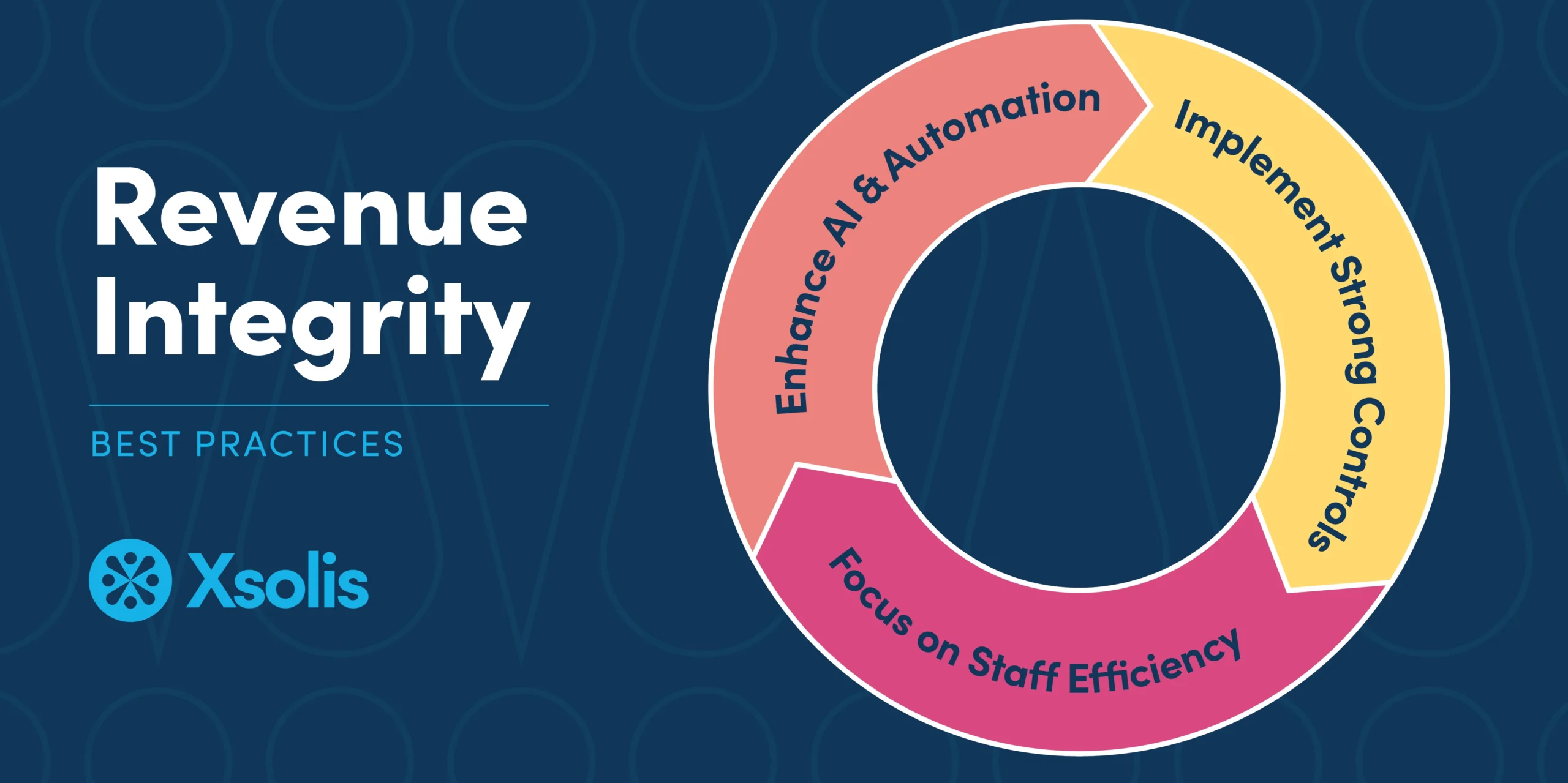Healthcare organizations today face a growing list of challenges in maintaining optimal financial performance. Revenue integrity, the practice of ensuring appropriate reimbursement for services while maintaining regulatory compliance, lies at the heart of many of these challenges.
This critical function has taken on new urgency as administrative spending now accounts for one-quarter of the $4 trillion spent on healthcare annually in the United States. According to McKinsey & Company research presented at a recent HFMA webinar, an estimated $265 billion in potential savings is available through improved revenue cycle management. By understanding the dynamic challenges impacting health system revenue and possible solutions, we can realize these savings while benefiting patients.
Understanding Revenue Integrity in Healthcare
Patient care journeys are rarely linear, requiring a continual exchange of medical documentation and billing information. Unfortunately, these constant handoffs, coupled with physician and nursing burnout, often lead to avoidable denials and revenue losses from missed documentation.
These challenges define the core purpose of revenue integrity teams. Revenue integrity professionals are guardians of an organization’s financial health, working diligently to prevent revenue leakage while ensuring high-quality patient care.
Recent data underscores the importance of this work. The American Hospital Association reports that 89% of health systems experienced an increase in avoidable denials between 2017 and 2020, highlighting why the revenue cycle team must work proactively to prevent these issues through proper charge capture and documentation.
Factors Impacting Revenue Integrity
Documentation and clinical data: Strong revenue integrity begins with precise documentation. As Tanya Sanderson, Senior Director of Revenue Integrity at Xsolis, explains, “Mid-revenue cycle is where patient care takes place, and the risk of revenue leakage is highly reliant on clinical, administrative processes and documentation.”
In an environment where physicians need help making time for patients, complete and accurate clinical documentation becomes extremely difficult. Particularly as health systems must manage a constant flow of logistical information such as real-time capture of patient status changes, medical necessity decision-making support, and integration between clinical and financial systems.
Technology and Automation: Organizations increasingly recognize technology as crucial in strengthening revenue integrity. A Guidehouse and Healthcare Financial Management Association survey initiative, the 2024 Revenue Cycle Management Report, found that over three-quarters of health system executives plan to invest in revenue cycle automation technologies within the coming year.
These investments target several interconnected areas, including AI-driven insights for medical necessity decision-making, automated charge capture systems, integration between EMR and revenue cycle systems, and predictive analytics to prevent avoidable denials.
Health plan relations and requirements: The complexity of modern healthcare reimbursement creates additional challenges. The Guidehouse–HFMA data reveals that fewer than a third of health systems report a final claim denial rate of 2% or below. Within Medicare Advantage programs, 22% report rates between 6.1% and 9%, with a third facing even higher rates. These statistics highlight the growing need for stronger collaboration between health systems and health plans.
Revenue Integrity Best Practices
Embrace AI & Automation: Modern healthcare demands modern solutions. AI-enabled tools create sustainable, frictionless healthcare environments where revenue cycle teams can focus on strategic priorities, and physicians and nurses can focus on delivering best-in-class patient care.
For health systems, this helps assure that charge capture processes achieve greater accuracy, revenue leakage decreases through proactive monitoring, and clinical operations receive enhanced support through automation.
Xsolis uses a proprietary metric — the exception rate — to identify potential revenue leakage in hospitals. It flags cases based on a patient’s Care Level Score™, an AI-powered metric that allows physicians to predict whether a patient needs to be escalated to an inpatient status.
Rising exception rates can signal missed revenue opportunities, staff training needs, engagement issues, or problematic payer dynamics. They can also be used to conduct monthly audits, identify trends across departments, improve payer conversations, and optimize appropriate status conversions.
Implement strong controls: Despite the importance of oversight, the National Association of Healthcare Revenue Integrity finds that only 42% of revenue integrity departments perform internal audits and compliance checks. To address this gap, organizations should prioritize:
- Regular auditing and monitoring programs
- Clear, documented policies and procedures
- Consistent workflow processes
- Ongoing performance tracking and adjustment
Focus on staff development: As revenue cycle processes grow more complex, staff development becomes increasingly critical. Industry reports show that over three-quarters of health systems now outsource some revenue cycle functions to manage increasing workloads. Successful organizations leverage internal or external resources and focus on continuous training and regular feedback loops.
The Future of Revenue Integrity in Healthcare
Looking ahead, Sanderson envisions revenue integrity evolving toward “a shared framework and objective approach that relieves clinician burden and improves coordination and collaboration between health systems and health plans.” This vision encompasses several key developments.
The next generation of revenue integrity will provide a 360° view of the care delivery and billing processes. It will also confront physician and nursing burnout by thoroughly integrating essential technologies to improve visibility across organizations and address physician burnout through enhanced AI and automation tools.
The Path Forward
In today’s challenging environment, health systems must prioritize revenue integrity to ensure optimal financial performance and quality patient care. The stakes are high: Healthcare IT Today reports that 35% of hospitals face losses greater than $50 million due to exhausted appeals, underscoring the critical need for robust revenue cycle management.
Success requires a coordinated effort. Through strategic investments in technology, process improvement, and staff development, organizations can build and maintain effective programs that fulfill their dual mission of providing excellent care while maintaining financial stability.
Ready to strengthen your organization’s revenue integrity program? Learn more about Xsolis’ AI-driven solutions.
Want to be involved with a community of healthcare leaders sharing best practices to overcome today’s most pervasive revenue integrity challenges? Learn about the Executive Revenue Integrity Council, launched in partnership with the Healthcare Financial Management Association.
